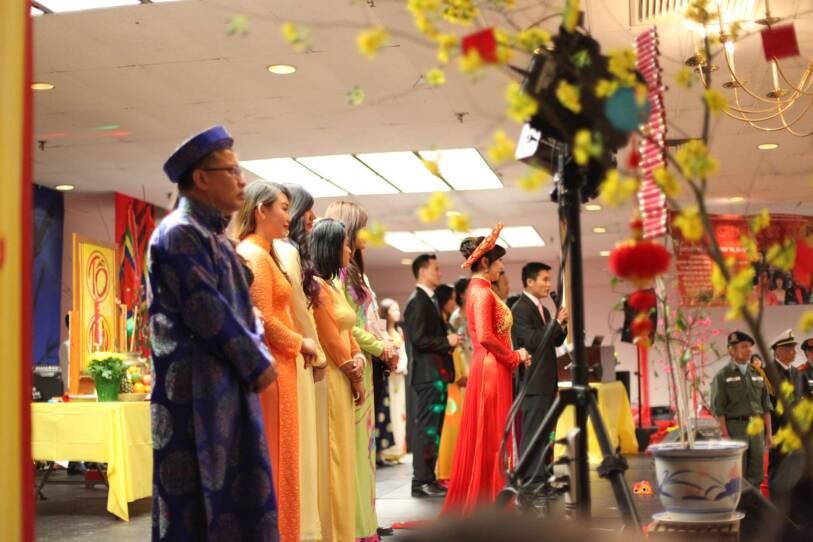Inside the auditorium at St. Gregory Church in Dorchester, 40 children and young adults strutted about the wide room sporting a range of colors and textures — deep maroon with delicate lace, bright and airy white silk, and shining blue with winding gold embroidery.
Some are as young as 2, others are in their mid-20s. All are rehearsing for a fashion show modeling Vietnamese clothing to celebrate this year's lunar new year.
This year it falls on Feb. 5, but Boston's Vietnamese community will celebrate Saturday with an annual festival called “Tet in Boston” at the Flynn Cruise Port in South Boston.
"Vietnamese Lunar New Year is called Tet,” explains Lien-Thu Dao, a member of Vietnamese American Community of Massachusetts. The group, along with the New England Intercollegiate Vietnamese Student Association, hosts the celebration that is free and open to the public.
Dao, a Dorchester resident, has volunteered for the event for the last 10 years. She said it’s a point of cultural pride.
"You see so many cultures” at the annual Dorchester Day Parade, she said in an interview with WGBH News. “I think representing your own culture is also important, not for your own culture but for contributing to the diversity of the place you live in, and, by doing that, you're doing your part as a resident here."
This year marks the 30th anniversary of the Vietnamese lunar new year event in Boston. It's also the first time there will be a fashion show.
Dao and other volunteers said the celebration is a way of bridging old and new aspects of Vietnamese culture. The youth model traditional and modernized styles of a distinct garment called an áo dài, pronounced ow yai, with the last word rhyming with high. It’s a shirt that features a long front flap and a long back flap with splits along the sides.
"It actually is a fairly modern creation,” explained Tuan Hoang, a professor at Pepperdine University in California. “But once it was developed into the form that we know, it stuck, and Vietnamese have been very proud of it.”
Hoang, who emigrated from Vietnam, said the áo dài became popular beginning around the 1930s. To him, and many other Vietnamese Americans, the garment represents more than just beauty.
"The refugees of the '70s and the '80s, that was one of their ways to honor their identity as nationalist Vietnamese people, and so aside from the fun, colorful aspect, there is also, I think a nationalist aspect to it as well,” he said.

Younger fashion show participants, like Dao's daughter Mina, are learning that sense of cultural pride as they rehearse for the festival in their garments.
"It's like a dress we wear for the tradition of new year," Mina, 8, explained when asked about her red áo dài with white polka dots and wide-legged white pants.
Mina, who will model and dance alongside some of her friends for the fashion show, said the garment makes whoever wears it “feel pretty and special.”
In between delegating tasks to the festival decoration committee and giving rehearsal notes to some of the older models, Dao said she swells with emotion as she watches her daughter strike poses.
"I feel like I'm doing something meaningful in terms of carrying on the tradition. Being a Vietnamese American, I think that's part of the responsibility that I feel,” Dao explained. “And by doing this, I learn more about my culture, find out about my identity, connecting myself to the community, and also to preserve the culture for my children."





